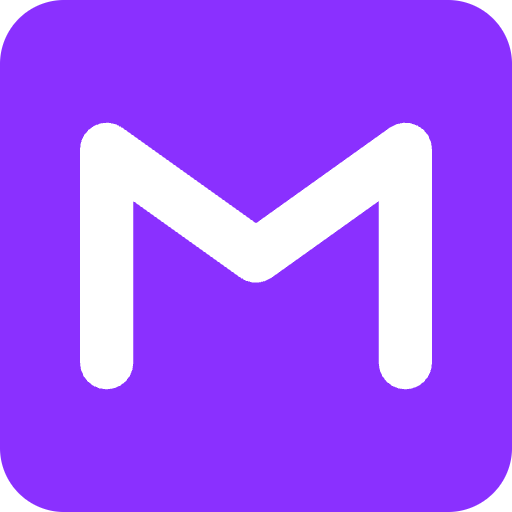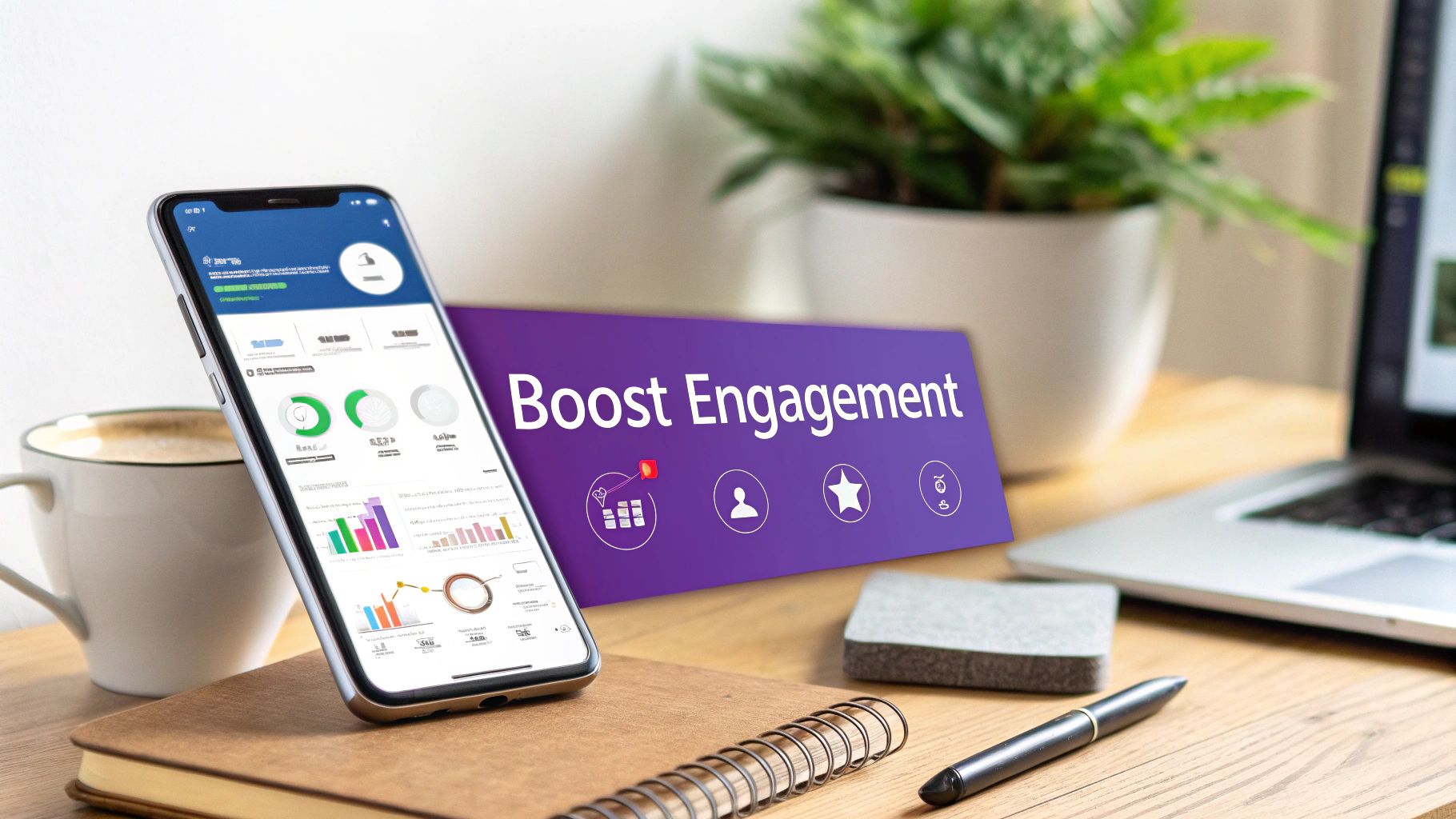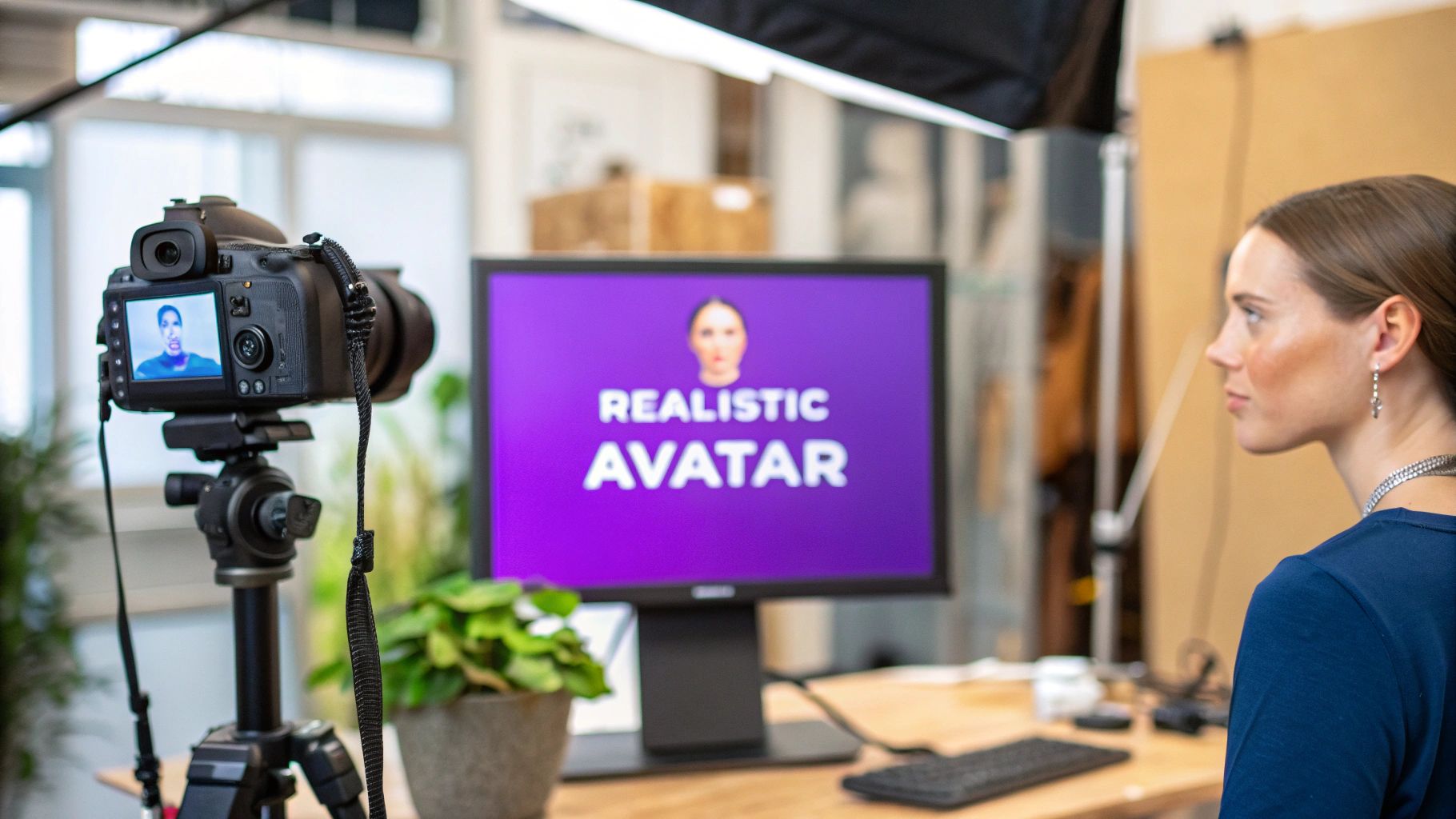How to Build Email List That Grows Fast & Effectively

To build a real, engaged email list, you need two things: a valuable incentive (what we call a lead magnet) and a smart way to get it in front of people. The whole game is about offering something your audience actually wants—like a killer checklist, a free guide, or an exclusive discount—in exchange for their email address. Once you have it, you've created a direct line of communication that you completely own.
Why Your Email List Is a Core Business Asset
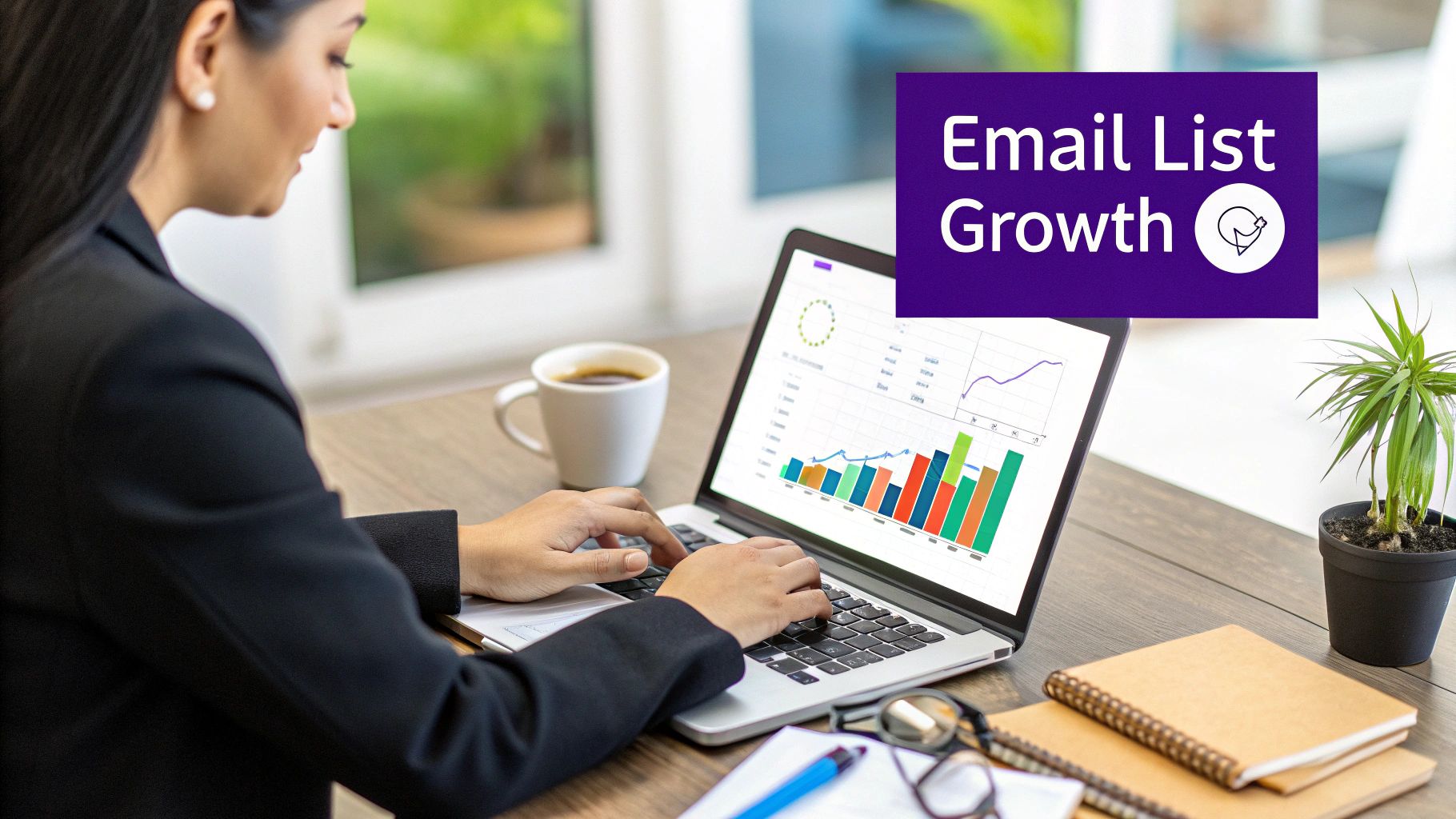
Let's cut right to it. Building an email list isn't just another item on your marketing to-do list. It's about forging a direct, unfiltered connection to your audience—one that you control. Think about it: social media platforms can change their algorithms on a whim, and your reach can disappear overnight. Your email list? That's a stable, reliable asset.
This idea of ownership is huge. When you're posting on Instagram or X, you're just renting space on someone else’s turf. But an email list is something you build and own, making it the ultimate insurance policy against skyrocketing ad costs and the whims of unpredictable platforms.
Before we dive into the "how-to," let's quickly break down the core components you'll need. This table gives you a bird's-eye view of a successful email list strategy.
Core Components of a Successful Email List Strategy
| Component | Purpose | Example |
|---|---|---|
| Lead Magnet | The incentive you offer in exchange for an email address. It needs to be genuinely valuable. | A free 10-page eBook, an exclusive video tutorial, or a 15% discount code. |
| Opt-in Form | The mechanism on your website where users submit their email. It must be simple and frictionless. | A pop-up form, an embedded form in a blog post, or a dedicated landing page. |
| Email Service Provider (ESP) | The software that stores your contacts and sends emails. This is your command center. | Mailchimp, ConvertKit, or ActiveCampaign. |
| Welcome Email | The first automated email a new subscriber receives. It confirms their subscription and delivers the lead magnet. | An email with the subject "Here's Your Free Guide!" that includes a download link. |
| Nurture Sequence | A series of automated emails designed to build a relationship and guide subscribers toward a goal. | A 5-day email course that educates new subscribers about a key topic. |
Each of these pieces plays a critical role. Without a great lead magnet, no one will sign up. Without a good ESP, you can't manage your list effectively. Getting these fundamentals right from the start is the key to building a list that actually grows your business.
The Unmatched ROI of Email
Email marketing consistently crushes other channels when it comes to return on investment (ROI). On average, for every $1 you put in, you can expect a return of over $36. It's just that efficient.
Why? Because the people on your list have literally raised their hands and asked to hear from you. They're already warm leads. You're not shouting into the void; you're talking to people who want to listen.
This direct access lets you build a real connection over time. You can guide subscribers from being vaguely aware of your brand to becoming loyal, paying customers, all through targeted and valuable content. If you want to dig deeper into the broader strategy, this comprehensive guide to lead generation is a fantastic resource.
An email list is the only marketing channel that gives you a direct, unfiltered line to your audience. You're not fighting an algorithm; you're building genuine relationships, one inbox at a time. This direct access is the foundation of sustainable business growth.
Building Trust and Authority
Beyond the immediate sales, your email list is a powerhouse for establishing your brand as an authority. When you consistently deliver valuable insights, tips, and solutions straight to someone's inbox, you stop being just a seller and start becoming a trusted resource.
This is how you build a rock-solid reputation and create long-term customer loyalty. It’s a fundamental part of learning how to build credibility in any niche.
And the opportunity here is only getting bigger. By 2025, the number of global email users is set to hit around 4.6 billion people, with projections showing it will climb past 4.8 billion by 2027. That steady growth just underscores the massive potential waiting for anyone who masters the art of building an email list.
Creating Lead Magnets People Actually Want

Think of an email address as currency. People are protective of their inbox, and they aren't going to hand over their contact info for a mediocre offer. To really build your list, you need an incentive so good, so perfectly matched to your audience's needs, that signing up feels like a total win.
That incentive is your lead magnet.
The days of the generic, 50-page ebook are pretty much over. Your audience wants immediate solutions and quick wins. Your lead magnet’s job is to solve one specific problem for one specific person—fast.
Identify a Single Urgent Problem
Before you write a single word or design anything, you have to lock onto a pain point your ideal customer is wrestling with right now. A vague offer is useless. A sharp, targeted solution? That’s irresistible.
Put yourself in your audience's shoes. What’s the question they ask over and over? What’s that small but infuriating roadblock getting in their way? Your mission is to create a resource that smashes that one obstacle. To do this, you really need to know who you’re talking to. The best way to get that clarity is to learn how to create buyer personas that feel like real people.
A freelance web designer, for instance, knows their audience struggles with writing project proposals. So, a lead magnet like a "5-Minute Project Proposal Template" is way more compelling than a generic "Guide to Freelancing."
Key Takeaway: A great lead magnet doesn't try to boil the ocean. It solves one urgent problem exceptionally well, giving the user an immediate sense of relief and progress. That’s how you build trust from the get-go.
Modern Lead Magnets That Actually Convert
Once you’ve nailed down the problem, it’s time to pick a format that delivers the goods. It’s time to think beyond the standard PDF. Consider these high-impact options:
- Interactive Checklists: These are perfect for walking someone through a process. A marketing consultant could offer a downloadable checklist for "Onboarding a New Client" that their audience can use again and again.
- Resource Libraries: Instead of one massive download, why not offer a curated collection of your best tools? A SaaS company might offer a "Growth Hacker's Toolkit" with links to their top 10 favorite apps, articles, and templates.
- Video Workshops or Mini-Courses: A short, exclusive video training feels incredibly high-value. A fitness coach could offer a "15-Minute Core Workout Video" that subscribers can access instantly.
- Custom Quizzes: People love learning about themselves. A financial advisor could create a "What's Your Money Personality?" quiz that serves up personalized tips based on the results.
These formats just plain work because they're engaging and offer instant gratification. One study found that nearly 60% of people who subscribe to a blog do it for a specific opt-in offer. A powerful, practical lead magnet is the best way to tap into that motivation.
Aligning Your Lead Magnet with Your Business Goals
Here’s the thing: your lead magnet can't just exist in its own little world. It needs to be a natural bridge to whatever you’re actually selling. A well-designed lead magnet attracts the right kind of people and gives them a small taste of the value you provide.
Think of it as the very first step in their journey with you.
Let's imagine a local meal prep service trying to grow its email list. Their ideal customers are busy professionals who want to eat healthy but have zero time to cook.
- Poor Lead Magnet: "A Guide to Healthy Eating." Too broad. Too generic. Nobody has time for that.
- Excellent Lead Magnet: "The 5-Day Healthy Lunch Plan for Busy Professionals (Under 10 Mins Prep Time)."
This second option is brilliant. It solves an immediate, specific problem for their target audience. After someone downloads the plan, the meal prep service can follow up with emails like, "Loving the lunch plan? Imagine having all your meals prepped for the week. Let us handle it for you."
See how that works? It's a seamless transition from the freebie to the paid service. The lead magnet didn't just capture an email; it perfectly qualified that person as someone interested in the core offer.
Designing Opt-In Forms That Convert Visitors

A killer lead magnet is a great start, but it’s only half the equation. You need a smart, frictionless way to get that offer in front of your website visitors. That's where your opt-in form comes in—it’s the digital handshake between you and a future subscriber.
The design and placement of this form can literally make or break your list-building efforts. A clunky, confusing form gets ignored. But a sharp, well-placed one? It becomes a powerful engine for growth. This isn't just about asking for an email; it's about making the value exchange feel completely natural and compelling.
Strategic Placement for Maximum Impact
Where you put your opt-in forms matters just as much as how they look. You want them to be visible without being obnoxious. It’s a balancing act, and honestly, using a few different placements is usually the way to go.
Think about the user’s journey. Are they deep into a blog post? About to click away? The context should dictate the type of form you show them.
- Exit-Intent Pop-ups: These only trigger when a user’s cursor heads for the exit. They’re a last-ditch effort to grab attention and can be surprisingly effective, often converting an additional 2-4% of visitors who were about to leave anyway.
- In-line or Embedded Forms: You see these placed right inside a blog post or page content. They feel natural and far less intrusive. They work best when they offer a "content upgrade"—a bonus resource directly tied to what the person is already reading.
- Welcome Mats or Full-Screen Overlays: These are the bold, in-your-face forms that pop up when someone first lands on your site. They’re highly effective for a can't-miss offer, but use them sparingly. They can be disruptive if overdone.
- Sidebar or Footer Forms: These are more passive but provide a consistent, site-wide spot for people to sign up. They’re perfect for a general newsletter subscription.
The Anatomy of a High-Converting Form
A persuasive opt-in form has a few key ingredients that work together to convince a visitor it’s worth signing up. Every element has a job, from grabbing attention to pushing for action. Simplicity is your best friend here.
Let's break down the essential components you absolutely need to nail.
A Magnetic Headline
Your headline is the first thing people see, and its only job is to stop the scroll. It needs to scream "benefit." So, instead of a boring "Subscribe to Our Newsletter," try something like, "Get 5 Actionable Marketing Tips in Your Inbox Every Week."
Benefit-Driven Copy
Keep the body copy short and punchy. Don't just list what they get; explain how it will make their life better, easier, or more successful. Bullet points are fantastic for making the value proposition scannable and easy to absorb at a glance.
A Crystal-Clear Call-to-Action (CTA)
The CTA button needs to be impossible to miss. Use action-oriented language. Words like "Download Now," "Get My Free Checklist," or "Unlock the Training" create a sense of urgency and are far more effective than a generic "Submit."
A great opt-in form makes the decision to subscribe a no-brainer. It clearly communicates immense value, removes all friction from the sign-up process, and presents a compelling call-to-action that feels like the next logical step for the visitor.
Using Psychological Triggers to Boost Conversions
Beyond the basic layout, you can weave in subtle psychological cues to make your forms even more persuasive. For instance, adding a small line of text like, "Join 5,000+ other smart marketers" taps into the power of social proof. People are just more likely to do something if they see that others are already doing it. Taking a moment to understand what is social proof in marketing can give you a real edge.
And remember, email is far from dead. About 92% of online adults use it, and a staggering 88% check their inbox multiple times a day. This high usage gives you a consistent opportunity to connect once they’re on your list. This constant access is precisely why building an email list remains one of the smartest things you can do for long-term growth.
Building Your First Automation Workflows
Getting a new subscriber is a huge win, but it’s just the start of the conversation. The real magic happens next, turning that initial interest into a lasting relationship. This is where automation comes in, working around the clock to make every new subscriber feel seen, valued, and understood from the moment they join your list.
Think of automation as your best employee. It never sleeps, never forgets, and perfectly executes your communication strategy every single time. By setting up a few foundational email sequences, you can build a system that consistently turns fresh sign-ups into loyal fans and, eventually, customers.
As you start to scale, choosing the right business process automation software becomes essential for managing your workflows without getting overwhelmed.
The Essential Welcome Series
The very first email a new subscriber gets is easily the most critical one you'll ever send. Welcome emails boast an average open rate of over 82%, making them your single best shot at making a killer first impression. This isn't just about delivering the lead magnet; it's about setting the stage for everything that comes next.
A great welcome series should nail three key things:
- Deliver the Goods Instantly: Fulfill the promise you made on your opt-in form by giving them immediate access to the lead magnet. No delays.
- Introduce Your Brand: This is your chance to inject some personality and show them what makes you different.
- Set Clear Expectations: Let subscribers know what kind of content they can expect from you and how often they’ll be hearing from you.
Your welcome email is the digital equivalent of a firm handshake and a warm smile. It confirms the subscriber made a smart choice and sets a positive tone for the entire relationship. Don't waste this high-engagement moment.
Here’s a simple but incredibly effective 3-day welcome sequence you can steal:
- Email 1 (Sent Immediately):
- Subject: Here’s Your Free [Lead Magnet Name]!
- Content: A warm thank you, a direct link to the lead magnet, and a brief intro to who you are and what you do. Keep it short and focused on delivering value right away.
- Email 2 (Sent on Day 2):
- Subject: Did you see this? [A common problem you solve]
- Content: Check in to see if they’ve had a chance to dive into the lead magnet. Share one quick, actionable tip related to the freebie and briefly connect it to the bigger problems your business solves.
- Email 3 (Sent on Day 3):
- Subject: What to expect next…
- Content: Set expectations for future emails. Tell them what kind of value you’ll be sending and how often. I like to end with a question to encourage a reply, like, "What’s the #1 thing you’re struggling with right now?"
Crafting a Simple Nurture Sequence
After the welcome mat has been rolled out, you need to keep the conversation going and continue providing value. That's what a nurture sequence is for—a series of automated emails designed to build trust by educating your audience long before you ever ask for a sale.
This is where you get to flex your expertise and prove you truly understand their challenges. The goal here isn't to sell hard; it's to guide them gently. Each email should offer a piece of valuable insight, a helpful tip, or a new perspective related to their interests.
Your nurture sequence is the perfect place to show off your best stuff. Once you learn how to create engaging content, you'll have a goldmine of material to repurpose for these emails.
Let's imagine a simple nurture sequence for a fitness coach whose lead magnet was a "7-Day Healthy Meal Plan":
- Email 1 (3 days after welcome series): Share a success story from a client who followed a similar plan. This provides powerful social proof and a dose of inspiration.
- Email 2 (3 days later): Address a common obstacle, like "How to Stay Motivated When You're Busy." Offer practical tips and show some empathy.
- Email 3 (4 days later): Introduce your core service with a soft call-to-action. Frame it as the next logical step, like, "If you found the meal plan helpful, you'll love my personalized coaching program."
This approach builds a natural bridge from the initial freebie to your paid offer, making the eventual sales pitch feel like a helpful suggestion rather than a pushy sales tactic.
Getting Eyes on Your Opt-Ins
So, you've built the engine: a killer lead magnet and a high-converting opt-in system. Now it's time to add the fuel. Actively driving the right kind of traffic to your offers is what separates a list that gets a trickle of new subscribers from one that grows predictably, day in and day out.
Let's ditch the passive "build it and they will come" mindset. It's time to get proactive and meet your ideal audience where they already hang out, giving them a compelling reason to check out your site and join your community.
Start With Your Own Channels
Your existing platforms are the lowest-hanging fruit for list building, hands down. These are warm audiences who already know you, like you, and trust you to some degree. Don't make them hunt for your sign-up forms—put your offers front and center.
- Social Media Bios: Your bio link is prime real estate. Instead of just sending people to your homepage, link directly to a dedicated landing page for your best lead magnet.
- Email Signature: Add a simple, one-line call-to-action to your email signature. A casual, "P.S. Grab my free [Lead Magnet Name] here" can quietly drive dozens of new subscribers over time.
- Content Integration: Weave mentions of your lead magnets directly into your blog posts, videos, and podcast episodes. If you write a detailed article on a topic, offer a related checklist or template as an easy win for your readers.
Play the Long Game with Content and SEO
Content marketing is the ultimate long-term strategy for attracting subscribers who are actively looking for you. When you create genuinely helpful content that solves a specific problem, you attract highly qualified visitors through search.
Every blog post should be an opportunity to capture an email. For example, a massive guide on a complex topic could offer a downloadable summary or a bonus video tutorial. This approach attracts people with high intent, making them far more likely to subscribe and stick around. If you want to go deeper, our guide on lead generation for small businesses has more advanced strategies.
This is why sending traffic to a dedicated landing page is so effective. Check out the conversion rate differences below.
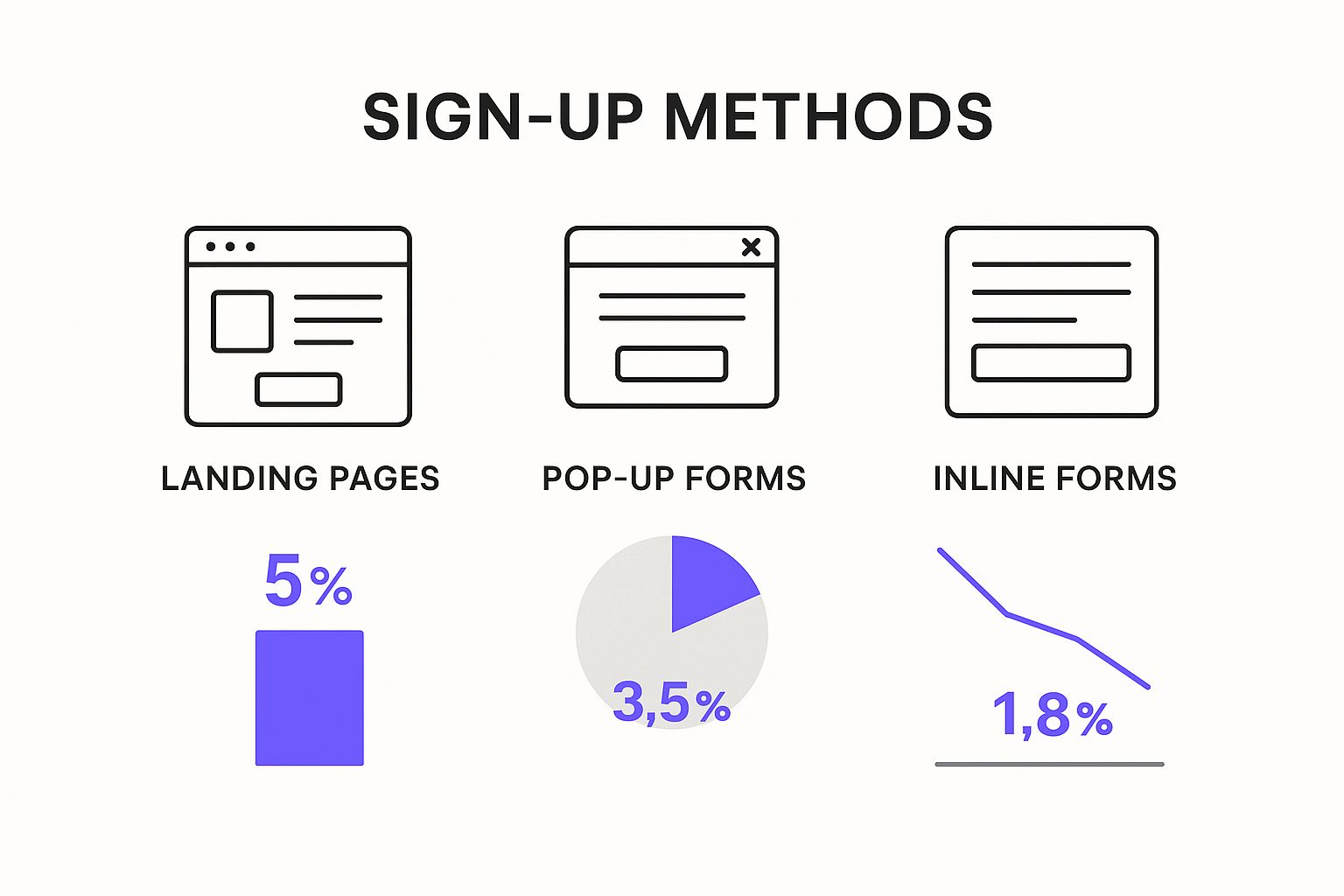
As you can see, a focused landing page with a single goal outperforms other form types, especially for targeted traffic from ads or guest posts. Landing pages convert at 5%, while pop-ups hit 3.5% and inline forms only 1.8%. The numbers speak for themselves.
Scale Your Growth with Targeted Ads
While organic methods are your foundation, paid advertising lets you laser-target your ideal subscribers and scale your growth on demand. You don't need a massive budget to get started, either. Even a small daily spend can produce great results if your targeting is on point.
A well-crafted ad campaign doesn't just buy traffic; it buys data. It's a powerful way to test your offers, refine your messaging, and discover exactly what resonates with your target audience, accelerating your list growth and business insights simultaneously.
Platforms like Facebook and Instagram are incredibly powerful because you can target users based on their interests, behaviors, and demographics. For a B2B audience, LinkedIn ads can be a goldmine for promoting professional resources like whitepapers or webinars. The key is to always send ad traffic to a dedicated landing page with a single call-to-action to maximize your ad spend.
Borrow Other People's Audiences
One of the fastest ways to grow your list is to get in front of someone else's established audience. Collaborations and partnerships expose your brand to a new, relevant group of people who are already warmed up and likely interested in what you have to say.
- Guest Posting: Write a high-value article for a respected blog in your industry. In your author bio, don't just link to your homepage. Instead, offer readers an exclusive content upgrade directly related to the post they just read.
- Podcast Interviews: Appearing as a guest on a podcast gives you a platform to share your expertise. You can then direct listeners to a special landing page to download a free resource you mentioned during the show.
- Joint Webinars: Partner with a complementary business to co-host a webinar or create a bundled giveaway. Both of you promote the event to your respective audiences, resulting in a win-win and significant list growth for everyone involved.
To help you decide where to start, here's a quick comparison of these different growth tactics.
Comparing Email List Growth Tactics
This table breaks down some popular strategies, giving you a sense of the effort, cost, and best-case use for each.
| Growth Tactic | Effort Level | Potential Cost | Best For |
|---|---|---|---|
| Owned Channels | Low | Free | Quick wins & leveraging existing trust. |
| Content & SEO | High | Low (Time) | Building a long-term, sustainable asset. |
| Paid Ads | Medium | Variable | Scaling growth quickly with precise targeting. |
| Guest Posting | High | Low (Time) | Tapping into established, relevant audiences. |
| Podcast Tours | Medium | Free | Building authority and reaching new listeners. |
| Joint Ventures | Medium | Low (Revenue Share) | Rapid list growth through partnership. |
Ultimately, there's no single "best" way. The most successful strategies combine several of these approaches. By creating a multi-channel system, you ensure a consistent flow of targeted traffic to your opt-in forms. This is how you build a list that doesn't just exist—it thrives.
Got Questions About List Building? We’ve Got Answers.
Jumping into email marketing always brings up a ton of questions. How long will this take? What tools do I actually need? Knowing what's ahead helps you build your email list with a lot more confidence and a lot less guesswork.
Let's tackle the most common hurdles and questions that come up, so you can sidestep the roadblocks and keep your momentum going.
How Long Does It Take to Build a Substantial List?
Honestly, there’s no magic number here. Your growth really hinges on your website traffic, how good your lead magnet is, and whether you're actively promoting it.
Think of it this way: a site with 10,000 monthly visitors and a decent 2% opt-in rate can passively pull in 200 new subscribers every single month. That's without lifting an extra finger.
Once you start adding proactive strategies to the mix—like targeted ads or collaborations—you could easily add hundreds more. The key isn't speed; it's consistency. Focus on building a system that works for you, and you could realistically hit your first 1,000 subscribers in just a few months.
The real goal is to build momentum. A little, consistent effort each week compounds over time. It turns a slow trickle of sign-ups into a steady, predictable stream of new leads for your business.
What Is a Good Opt In Form Conversion Rate?
While conversion rates can swing wildly depending on the industry, your offer, and where your traffic is coming from, a solid benchmark to aim for is somewhere between 2-5%.
Your average pop-up form might hover around 3%, but I've seen highly-tuned forms paired with an absolutely irresistible lead magnet hit 10% or even higher.
Instead of getting fixated on some universal number, your actual goal should be to continuously beat your own baseline.
- Test your headlines: Does a headline that screams benefits work better than one that asks a question?
- Tweak your CTAs: Try changing that boring "Submit" button to something exciting, like "Get My Free Guide."
- Simplify your design: Is there any visual clutter you can strip away to make the offer clearer?
Small, incremental tests are the secret sauce. They're how you find out what truly clicks with your audience and start pushing those conversion rates up.
Should I Ever Buy an Email List to Get Started?
Let me make this simple: no. Buying an email list is that tempting shortcut that always, always backfires. It can do some serious, long-term damage to your brand’s reputation.
These lists are almost always packed with unengaged, low-quality contacts who never asked to hear from you in the first place.
Emailing them doesn't just put you on the wrong side of anti-spam laws like GDPR; it completely tanks your sender reputation. This makes it much harder for your legitimate emails to ever land in an inbox. Internet Service Providers (ISPs) will flag you as a spammer in a heartbeat, and you could even get your account shut down for good.
Building your list organically is the only way to go. It guarantees you have an audience that actually wants to hear from you.
What Are the Essential Tools for Building an Email List?
You can get a seriously powerful list-building machine up and running with just two core tools. And the best part? Many of them have generous free plans, so you can get started without a big upfront investment.
- An Email Service Provider (ESP): This is your command center. It’s where you’ll manage subscribers, set up automations, and send your emails. You can't go wrong with popular, reliable options like Mailchimp, ConvertKit, or ActiveCampaign.
- An Opt-in Form Builder: You need a way to actually create the sign-up forms on your website. Your ESP often has this feature baked in, but dedicated tools like OptinMonster or Leadpages can give you way more advanced features, targeting options, and design control.
With just those two pieces in place, you have everything you need to start capturing leads and growing your audience from the ground up.
Ready to create a professional online presence that attracts the right audience? MakerBox uses AI to generate optimized bios, profile pictures, and social media content that drives real engagement. Stop guessing and start growing. Transform your professional brand with MakerBox today.
